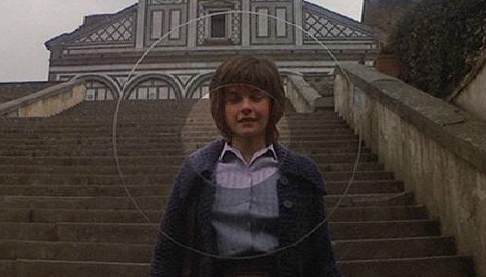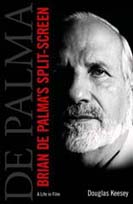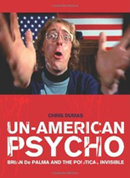"THE NEW LIFE BEGINS: DANTEAN OBSESSION IN 'OBSESSION'"

As Brian De Palma's Obsession turns 35 this year, it seems the perfect time for Robert Cumbow's essay on the film to be uncovered. Originally published in the January 1977 issue of Seattle's Movietone News, Cumbow's essay explores parallels between Obsession and Dante, but also digs deep into the ways De Palma's cinematic techniques provide subtextual clues to the psychological states of his characters (Obsession was written by Paul Schrader, based on a story by Schrader and De Palma). Cumbow (who also credits Grace Cumbow and Richard T. Jameson with assisting him in writing the piece) posited his own version of a 1977 "spoiler alert" by warning readers in his third paragraph that if they hadn't yet seen Obsession, "reading on can irreparably harm one’s experience of the film." I like the way Cumbow delves into the film's subtle clues in the following paragraph:
We are cinematographically tipped to LaSalle’s involvement in the plot against Court quite early in the film, even before we are fully aware there is such a plot. There is that arresting, unexpected, nobody’s point-of-view shot of LaSalle in the taxi, leaving Court in front of the Florentine church, LaSalle’s ambiguous expression inappropriately in focus while, through the rear window, Court blurs into the background as the taxi pulls away. But earlier still, we are given a stunning and troublesome presentiment of the increasing distance between the two partners (though at the time we may think Court’s obsession, not La Salle’s, to be the root of the separation): At a café party a drunken LaSalle lets slip his discontentment with Court’s disregard for money and his wasteful use of valuable park land as a memorial plot to his wife and daughter. Next day, Court and LaSalle face each other across a café table, more than a Panavision frame’s width between them, as we recall the previous evening’s moment of truth. As they talk, Zsigmond’s camera pans from one face to the other, distinctly not timing the pans with the alternating lines of dialogue, and racking focus as the camera rakes the space between the two men, fixing on the street scene outside the café window, so that each time the panning camera comes to rest on one or the other’s face, it must be refocused. This most dramatic stylistic emphasis stresses not only that both men are somehow out-of-synch with the real world, but also that they are no longer themselves compatible. Their partnership, no longer the unity of purpose it appeared to be in the opening sequence, has become a separateness of viewpoint and command.
Meanwhile, the PDF file of the entire Movietone News issue happens to include a year-end guide to the best films of 1976, a year that also saw the release of De Palma's Carrie. Cumbow listed Obsession as his film of the year, while Jameson found that film "tainted and trivializing," although he mentioned that Carrie came close to making his top ten (Cumbow found room for Carrie on his top ten list, and he also reviewed it near the end of the issue). Ken Eisler included Carrie in his top ten, and Rick Hermann included Obsession in his.
(Thanks to Peet!)
Updated: Thursday, September 8, 2011 5:29 PM CDT
Post Comment | View Comments (1) | Permalink | Share This Post



